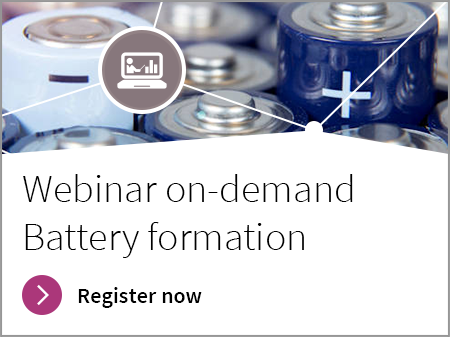Battery formation
Solutions that make battery formation equipment more accurate and efficient
There is rising global demand for batteries due to an increase in battery-powered applications, in particular electric vehicles (EVs). But before a battery can be fitted in an EV, it must be formatted and tested. The battery formation process, which relies on special battery formation equipment to charge and discharge a battery, demands a high degree of voltage and current accuracy to ensure the battery lasts for the indicated lifetime. Only after testing a battery can it be deemed market-ready.
A time-intensive formation process
Battery formation is currently the main bottleneck in the battery manufacturing process. The charge and discharge cycles that activate the material in a newly assembled battery cell or pack can take up to 20 hours. But the process is essential as it greatly impacts a battery’s life, quality and cost. Nearly every newly produced battery is subject to the formation and testing process before it can be fitted in a system. Battery formation equipment featuring the right power system, often AC-DC or DC-DC stage, is required to carry out these key steps.
System diagram: battery formation
Manufacturers demand accuracy and reliability
Most battery equipment manufacturers expect the supplier to suggest a suitable battery formation power system solution. Ideally, it:
- Enables high voltage and current accuracy of up to 0.01%.
- Provides thermal management of MOSFET for higher current rating requirements.
- Increases the overall power density with a higher current rating size.
- Improves the reliability of a system solution that operates 24 hours a day, 7 days a week.
In general, manufacturers seek a quality system solution that is not over-engineered. It should have an attractive cost-performance ratio, yet be reliable and stable to facilitate continuous operation under the given conditions. With space at a premium, high power density is an excellent, often preferred way to decrease the solution’s size. Opting for a standard platform that can be scaled to fit a wide range of requirements enables a manufacturer to enjoy fast time to market.
Higher power density, greater efficiency: Infineon empowers successful designs
At Infineon, we have a solid understanding of the battery formation market and are able to provide full-spectrum system solutions, from the AC grid to the battery, that require a highly efficient and power dense PFC stage and isolated DC-DC stage. We recommend a totem pole PFC converter and a bi-directional DC-DC converter in our full system silicon solution. This offers great design flexibility, allowing you to meet varying customer requirements. Particularly noteworthy: for non-isolated DC-DC buck-boost stages, we enable you to achieve high power density, leading, of course, to greater efficiency. Infineon’s comprehensive portfolio of surface mounted devices (SMD) is ideal for those prioritizing a lower BOM and higher power density, compared with a package supported by the PCB board.
Explore our system solutions to get started on your battery formation power system designs.
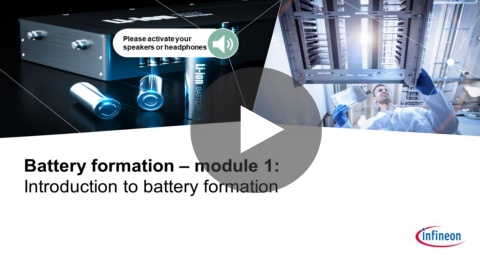
The first of three trainings on battery formation will introduce you to this crucial application in the battery manufacturing process.
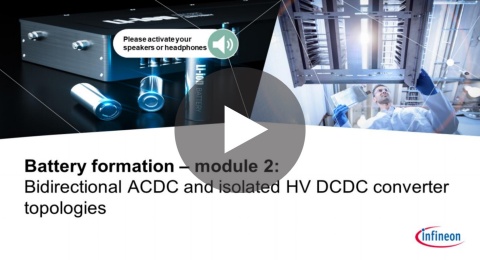
The second of three trainings on battery formation will go into more depth about the process by looking at converter topologies.
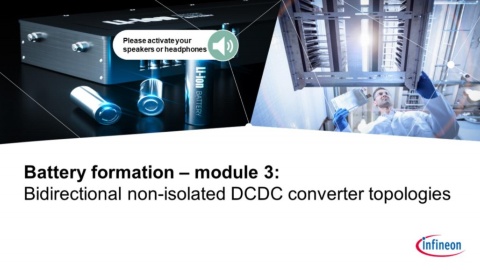
The third of three trainings on battery formation will dive even deeper into the process
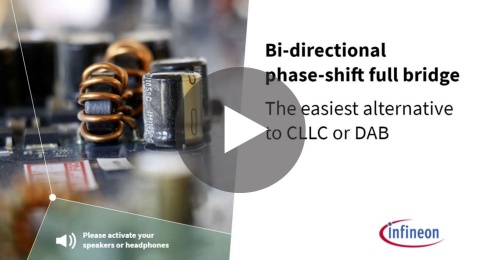
Description: In this eLearning you will learn how to use the bi-directional phase-shift full bridge without changing the design or lowering the performance.

